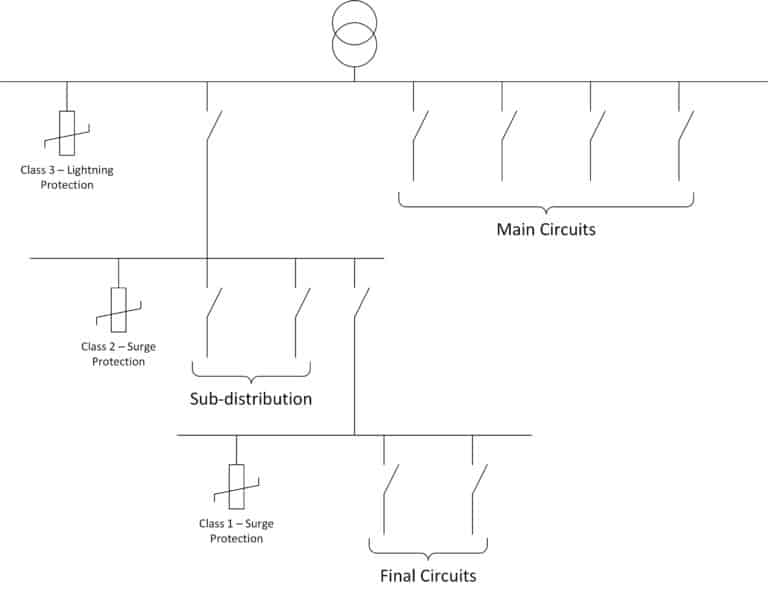Surge Protection
What is Surge Protection?
Surge Protection Devices (SPD’s) are parallel connected devices whose sole purpose is to divert potentially damaging voltage transients to earth; thus preventing sensitive electronic equipment being exposed to such voltages.
How does Surge Protection work?
Figure 1 (below) shows the voltage / current characteristic for both zinc oxide and silicon carbide surge protection. Both types of SPD have a window of voltage operation within which very little current is drawn.
This window equates to the positive and negative peaks of the voltage for the normal operating voltage for a given installation.
Once the voltage exceeds this ‘knee point’ – either in the positive or negative direction – the current drawn by the surge protection device increases dramatically; the effect of which is to limit any further increases in voltage. In the case of the Zinc Oxide SPD, the increase in voltage beyond the conduction point is very limited.
Figure 1 – Typical voltage / current characteristic for Zinc Oxide and Silicon Carbide surge protection devices
How are Surge Protection Devices applied?
Figure 2 (below) shows an example of a surge protection scheme where different grades are distributed throughout an electrical installation.
The main incoming supply has a Class 3 device which basically protects against direct or indirect (induced) lightning strikes. This type of surge protection is capable of absorbing high levels of energy, the trade-off for which is the comparatively high let through voltage – often as high as 1500V.
At the sub-distribution level, Class 2 devices are applied to provide protection against the energy let through by Class 3 surge protection or local switching transients. This type of protection can still absorb significant energy, but the let through voltage tends to be lower – typically 900 – 1200V.
Final circuits tend to have the most sensitive load connected to them and as such, need to have the highest level of protection. A Class 1 SPD will offer such protection providing a let through voltage of typically 600 – 750V, but the amount of energy that can be absorbed by a Class 1 device is significantly lower than the Class 2 or Class 3 SPD’s.
Quite often, installations will have a Class 3 surge protection device on the main incoming supply and people may be under the impression that this provides adequate protection for the whole load. The reality is that, in most cases, a graded surge protection scheme such as that shown in Figure 2 is required to provide comprehensive protection for modern sensitive loads.
Figure 2 – Example of graded surge protection application
How Puresine can help
Puresine can provide analysis, design and implementation of surge protection schemes based upon the specific site requirements. If you’d like any assistance with your protection scheme or would like any advice on which SPD’s are most suitable for your application, please complete the form below and one of our technical engineers will make contact to discuss your situation further.
Contact Us
...


